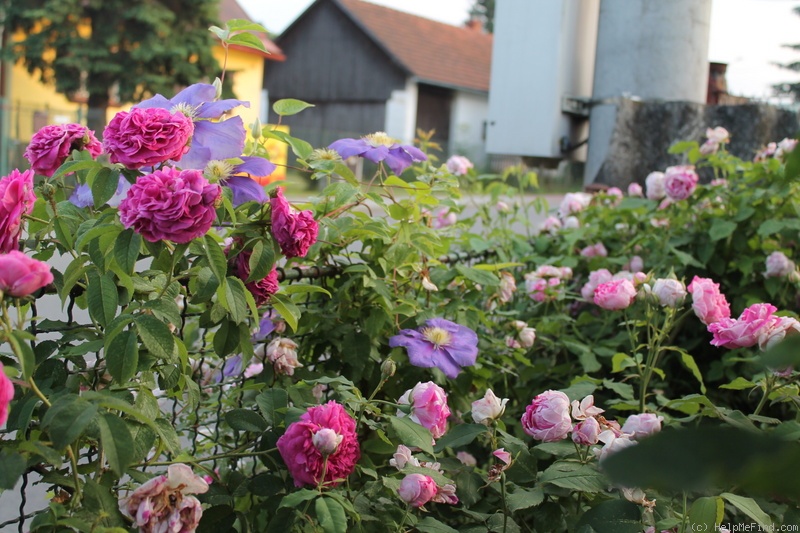|
|
'Charles de Mills' rose Description

Photo courtesy of Eva Trifon
HMF Ratings:
176 favorite votes.
Average rating:
EXCELLENT-.
ARS:
Mauve or mauve blend.
Registration name: Charles de Mills
Bloom:
Crimson or dark purple. Strong fragrance. Average diameter 4.75". Large, full (26-40 petals) bloom form. Once-blooming spring or summer.
Habit:
Few or no prickles/thorns, suckers on its own roots. Dark green foliage.
Height: 39" to 5' (100 to 150cm). Width: 4' to 5' (120 to 150cm).
Growing:
USDA zone 4b through 8b. Shade tolerant. Disease susceptibility: disease resistant, susceptible to Mildew. Prune after flowering is finished. Prune lightly until this rose gets established (about two years), then prune it back by about a third.. This rose blooms on old wood.
Patents:
Patent status unknown (to HelpMeFind).
Notes:
The earliest mention of 'Bizard triomphant' is in the 1786 catalogue of Gottlob Börner from Dresden, Germany, "bizard" being a term applied to tulips with streaked petals. This term seems to have mutated to "bizarre" in later French publications. Pépinières Loubert's 2002 Catalogue says this rose came from Holland pre-1700. The 2004 catalogue lists 'Bizarre triomphant' as originating before 1811 and a separate 'Charles de Mills' before 1885. The 1844/45 Van Houtte catalogue contains the first known mention of 'Charles de Mils'. There is no substantion for the date of 1746. A Charles Mills was Director of the East India Company, elected 1785. scattered second blooms in a hot period (July 22, 2018)
|